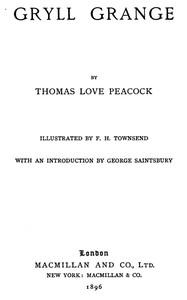|
|
Read this ebook for free! No credit card needed, absolutely nothing to pay.Words: 47280 in 31 pages
This is an ebook sharing website. You can read the uploaded ebooks for free here. No credit cards needed, nothing to pay. If you want to own a digital copy of the ebook, or want to read offline with your favorite ebook-reader, then you can choose to buy and download the ebook.

: Textiles and Clothing by Watson Kate Heintz - Textile industry; Textile fabrics; Sewing; Dressmaking Crafts; Technology@FreeBooksTue 06 Jun, 2023 Primitive Methods 3 Weaving 14 Fibers 29 Cotton 29 Wool 37 Flax 43 Silk 53 Modern Methods 59 Weaving 69 Weaves 72 Bleaching and Dyeing 78 Printing 81 Finishing 83 Cotton Goods 85 Linens 86 Woolens and Worsteds 88 Silks 90 Names of Fabrics 94 Bibliography on Textiles 103 Hand Sewing 107 Ornamental Stitches 114 Hems 123 Tucks and Seams 128 Plackets 135 Sewing on Bands 138 Fastenings 141 Patching 149 Darning 155 Mitering Embroidery, Joining Lace 158 Machine Sewing 162 Dressmaking 167 Patterns 171 Making Seven-Gored Skirt 172 Making Shirt Waists 182 Lined Waist 186 Sleeves 194 Collars 198 Seamless Yokes 200 Pressing 201 Construction and Ornament in Dress 203 Ornament of Textiles 212 Color 214 Children's Clothes 216 Care of Clothing 219 Cleaning 221 Repairing 225 Bibliography on Sewing and Dressmaking 229 References: History of Costume; Ornament and Design 234 Program for Supplemental Study 236 Index 241 TEXTILES AND CLOTHING Spinning and weaving are among the earliest arts. In the twisting of fibers, hairs, grasses, and sinews by rolling them between the thumb and fingers, palms of the hands, or palms and naked thigh, we have the original of the spinning wheel and the steam-driven cotton spindle; in the roughest plaiting we have the first hint of the finest woven cloth. The need of securing things or otherwise strengthening them then led to binding, fastening, and sewing. The wattle-work hut with its roof of interlaced boughs, the skins sewn by fine needles with entrails or sinews, the matted twigs, grasses, and rushes are all the crude beginnings of an art which tells of the settled life of to-day. Nothing is definitely known of the origin of these arts; all is conjecture. They doubtless had their beginning long before mention is made of them in history, but these crafts--spinning and weaving--modified and complicated by inventions and, in modern times transferred largely from man to machine, were distinctively woman's employment. The very primitive type of spinning, where no spindle was used, was to fasten the strands of goats' hair or wool to a stone which was twirled round until the yarn was sufficiently twisted when it was wound upon the stone and the process repeated over and over. The next method of twisting yarn was with the spindle, a straight stick eight to twelve inches long on which the thread was wound after twisting. At first it had a cleft or split in the top in which the thread was fixed; later a hook of bone was added to the upper end. The spindle is yet used by the North American Indians, the Italians, and in the Orient. The bunch of wool or flax fibers is held in the left hand; with the right hand the fibers are drawn out several inches and the end fastened securely in the slit or hook on the top of the spindle. A whirling motion is given to the spindle on the thigh or any convenient part of the body; the spindle is then dropped, twisting the yarn, which is wound on the upper part of the spindle. Another bunch of fibers is drawn out, the spindle is given another twirl, the yarn is wound on the spindle, and so on. Later the distaff was used for holding the bunch of wool, flax, or other fibers. It was a short stick on one end of which was loosely wound the raw material. The other end of the distaff was held in the hand, under the arm or thrust in the girdle of the spinner. When held thus, one hand was left free for drawing out the fibers. On the small spinning wheel the distaff was placed in the end of the wheel bench in front of the "fillers"; this left both hands free to manage the spindle and to draw out the threads of the fibers. The flax spinning wheel, worked by means of a treadle, was invented in the early part of the sixteenth century and was a great improvement upon the distaff and spindle. This it will be seen was a comparatively modern invention. The rude wheel used by the natives of Japan and India may have been the progenitor of the European wheel, as about this time intercourse between the East and Europe increased. These wheels were used for spinning flax, wool, and afterwards cotton, until Hargreaves' invention superseded it. WEAVING Someone has said that "weaving is the climax of textile industry." It is an art practiced by all savage tribes and doubtless was known before the dawn of history. The art is but a development of mat-making and basketry, using threads formed or made by spinning in place of coarser filaments. Before the "reed" was invented, the filling threads were drawn evenly into place by means of a rude comb and driven home by sword-shaped piece of wood or "batten." The reed accomplished all this at one time. Free books android app tbrJar TBR JAR Read Free books online gutenberg More posts by @FreeBooks
: Venice Preserved: A Tragedy in Five Acts by Otway Thomas Boucicault Dion Editor - Tragedies; Venice (Italy) History 1508-1797 Drama@FreeBooksTue 06 Jun, 2023

: Gryll Grange by Peacock Thomas Love Saintsbury George Commentator Townsend F H Frederick Henry Illustrator - English fiction 19th century@FreeBooksTue 06 Jun, 2023
|
Terms of Use Stock Market News! © gutenberg.org.in2025 All Rights reserved.






